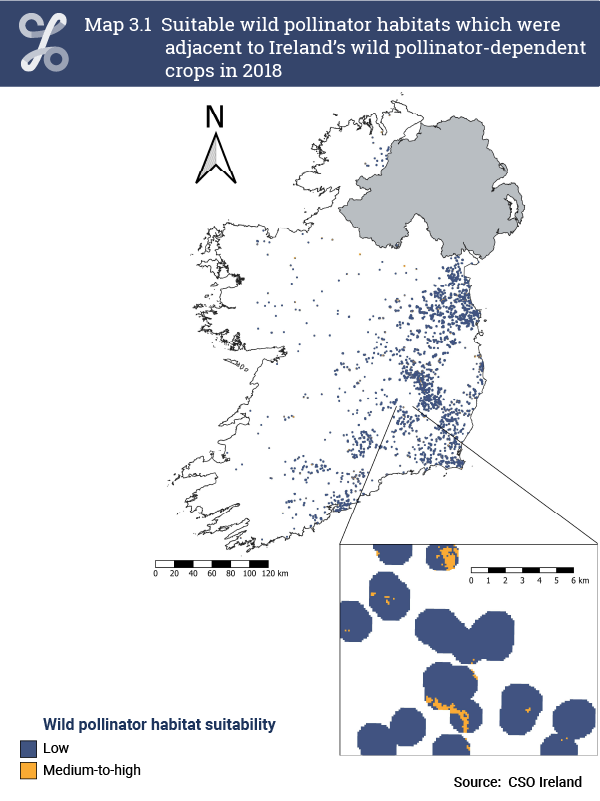This publication is categorised as a CSO Frontier Series Output. Particular care must be taken when interpreting the statistics in this release as it may use new methods which are under development and/or data sources which may be incomplete, for example new administrative data sources.
A total of 542,000 hectares of land in Ireland were assessed to determine the likelihood that they provide suitable habitat for wild pollinators for the period of 2018 (Table 3.1). This is equal to 8% of Ireland’s total terrestrial and transitional ecosystems in the same period. The assessed area is based on the maximum flight distance of 1 km from 22,000 hectares of wild pollinator-dependent crops (See Table 4.1, Chapter 4 for a breakdown of these crops). The ecosystem types in these areas were primarily Grasslands (314,000 hectares) and Croplands (177,300 hectares), with Forests & Woodlands (20,900 hectares) being the next most frequent. Given the location of the wild pollinator-dependent crops, most of these ecosystems were located in the east and southeast of the country (Map 3.1).
| X-axis label | Suitable pollinator habitat | Unsuitable pollinator habitat |
|---|---|---|
| Heathlands & Shrubs | 67 | 33 |
| Forests & Woodlands | 41 | 59 |
| Inland Wetlands | 8 | 92 |
| Grasslands | 2 | 98 |
| Croplands | 0 | 100 |
Of the ecosystems assessed, only 15,800 hectares (3%) were estimated to have moderate-to-high suitability for providing habitat for wild insect pollinators. This included 8,500 hectares of Forests & Woodlands, 6,100 hectares of Grasslands and 400 hectares each of Croplands, Heathlands & Shrubs, and Inland Wetlands. Around 67% of Heathlands & Shrubs and 41% of Forests & Woodlands provided suitable habitat (Table 3.1, Figure 3.1). By contrast, whilst Grasslands were the second most abundant ecosystem type providing habitat, this was only 2% of their overall extent in the assessed ecosystem area.

Learn about our data and confidentiality safeguards, and the steps we take to produce statistics that can be trusted by all.